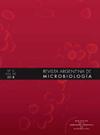作为产志贺毒素大肠杆菌 (STEC) 菌株潜在持久来源的奶制品污水管理系统。
IF 2.1
4区 生物学
Q4 MICROBIOLOGY
引用次数: 0
摘要
产志贺毒素大肠杆菌(STEC)是一类致病性肠道细菌,与人类高发疾病有关,对公共卫生具有重要意义。STEC 在畜牧业环境中无处不在,它在环境中的存在强调了妥善管理农业污水以降低污染对健康造成的风险的重要性。为了检测布宜诺斯艾利斯省西南部两个奶牛场("A "和 "B")污水处理系统中的 STEC,我们在一年中的两个不同时期(冬季和春季)和处理系统的不同位置采集了样本("A",样本数为 88;"B",样本数为 72)。毒力基因(STX、EAE、SAA 和 ehxA)分析标记显示,13.1% 的样本中存在 STEC,显示春季 STEC 数量增加,不同奶牛场之间的差异可能与其维护条件有关。粪便之后,沉积物中 STEC 阳性样本的比例最高,这与这些菌株通过形成生物膜在环境中存活的能力有关。在所有 STEC 阳性样本中发现了八种遗传特征,这些特征与可导致溶血性尿毒症(HUS)和其他胃肠道疾病的 STEC 菌株有关。这表明该地区的奶牛场环境是致病性 STEC 菌株的贮藏地,并对公共卫生产生影响。本文章由计算机程序翻译,如有差异,请以英文原文为准。
Dairy effluent management systems as a potential persistence source of Shiga toxin-producing Escherichia coli (STEC) strains
Shiga toxin-producing Escherichia coli (STEC) is a group of pathogenic enterobacteria of significant public health importance due to their association with highly prevalent human diseases. STEC is ubiquitous in livestock environments, and its presence in the environment emphasizes the importance of properly managing agricultural effluents to reduce health risks from contamination. In order to detect STEC in the effluent treatment systems of two dairy farms (“A” and “B”) in the southwest of Buenos Aires province, samples (“A”, n = 88; “B”, n = 72) were taken at two different times of the year (winter and spring) and at various points in the treatment systems. Analysis markers for virulence genes (stx, eae, saa, and ehxA) revealed the presence of STEC in 13.1% of the samples, showing an increase in spring and differences between dairy farms possibly related to their maintenance conditions. After manure, sediments showed the highest proportion of STEC-positive samples, which is relevant due to the ability of these strains to survive in the environment through biofilm formation. Eight genetic profiles were identified among all STEC-positive samples, which are associated with STEC strains that can cause hemolytic uremic syndrome (HUS) and other gastrointestinal diseases. This demonstrates the role of dairy farm environments in the region as reservoirs of pathogenic STEC strains and their impact on public health.
求助全文
通过发布文献求助,成功后即可免费获取论文全文。
去求助
来源期刊

Revista Argentina de microbiologia
MICROBIOLOGY-
CiteScore
3.30
自引率
0.00%
发文量
46
审稿时长
>12 weeks
期刊介绍:
La Revista Argentina de Microbiología es una publicación trimestral editada por la Asociación Argentina de Microbiología y destinada a la difusión de trabajos científicos en las distintas áreas de la Microbiología. La Asociación Argentina de Microbiología se reserva los derechos de propiedad y reproducción del material aceptado y publicado.
 求助内容:
求助内容: 应助结果提醒方式:
应助结果提醒方式:


